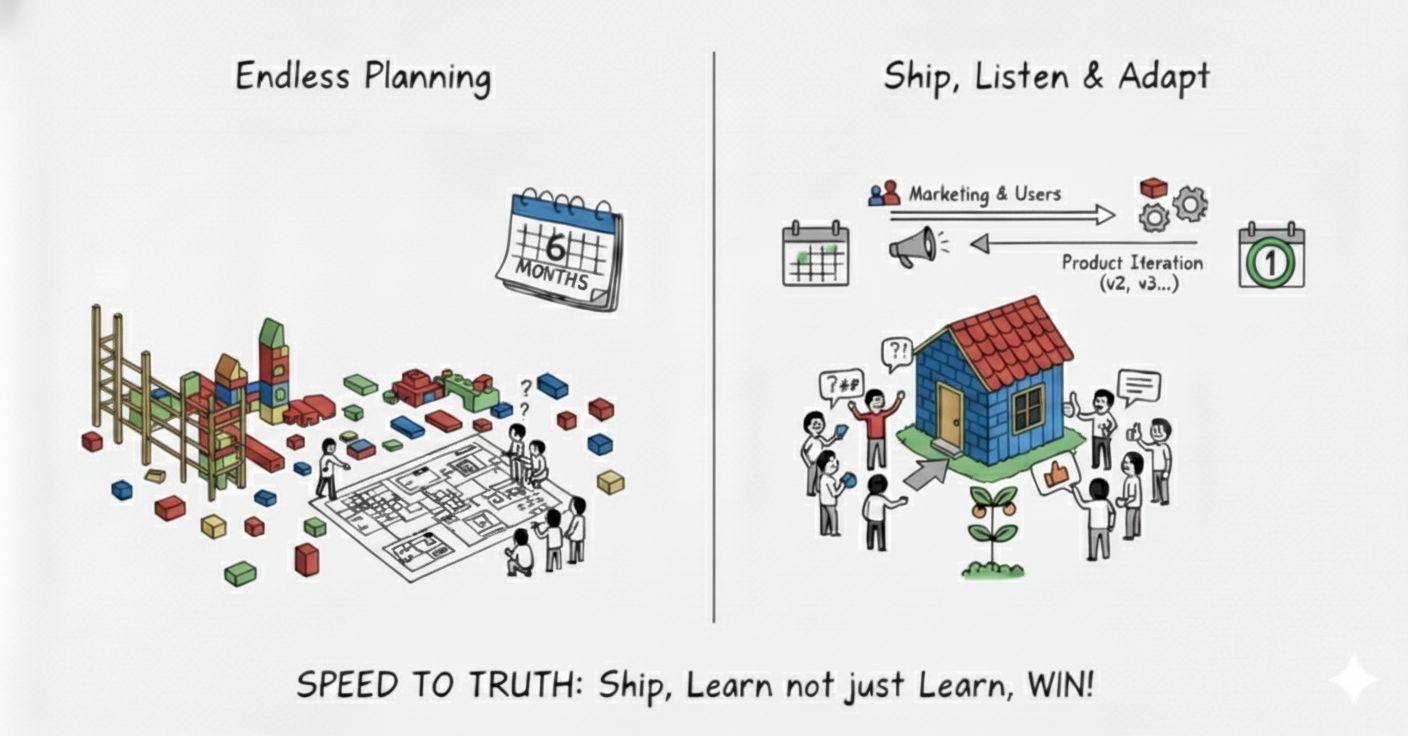Recently, at GUVI, we decided to launch a new product.
The default estimate was six months.
Six months of features. Six months of planning. Six months before a single user touches it.
But I wasn’t comfortable with that.
Six months without validation felt too risky.
So I gave the team a different target:
“You have one month. Build only what’s required to test the concept.”
That one decision changed the entire trajectory of the project.
We fixed the launch date and worked backwards. Suddenly, the team wasn’t thinking about a perfect version. They were thinking about the true version, the one that actually mattered for validation.
And when the timeline shrinks, the noise disappears.
Here’s what we saw:
1. Teams focus on what truly matters
The question becomes: “What must the user experience on Day 1?”
Everything that doesn’t align with that gets dropped.
2. Nice-to-have features die instantly
Not because we don’t want them, but because they don’t change the validation outcome.
3. You discover the real “core product”
Building only the essentials shows you the product’s true purpose.
Most teams never achieve this clarity because they ship too late and with bloated code.
4. Decision-making becomes sharper
No long meetings. No circular discussions.
Every choice is tied to the one-month reality.
5. The roadmap becomes practical instead of theoretical
A six-month plan is usually a collection of assumptions.
A one-month plan forces you to face the truth.
6. You build only the features needed to test the concept
Not the visions. Not the “dream product.”
Only what proves whether the idea works in the real world.

And that is where the magic happens.
We launched a little over a month.
It was neither perfect nor polishable.
But usable.
And most importantly- live.
Real users started using the product.
Real feedback started coming in.
Real behaviour started shaping Version 2.
Meanwhile, we didn’t wait.
Marketing campaigns began with the current version.
User acquisition started early.
Two parallel tracks opened up immediately:
Track 1: Marketing with the current product
Track 2: Product development for the next features
If we had followed the six-month plan, these campaigns would’ve started only after launch.
Instead, we gained five extra months of real-world learning, user engagement, and iteration.
This is why speed matters.
Not to cut corners, but to reduce risk.
Not to rush, but to get the truth faster.
Takeaway:
You don’t win by building the perfect version first.
You win by learning faster than others.
The market rewards teams who ship, listen, and adapt,
not teams who plan endlessly in isolation.
Build fast. Validate early. Perfect later.
